Valdisieve
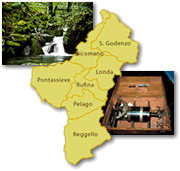
Developing along the lower course of the Sieve River, this valley, like the nearby Mugello, is characterised by a prevalently hilly conformation, dominated by dense woodlands, which has conditioned the development of economic activities, prevalently dedicated to agriculture and the exploitation of the woods. In recent years, in view of recovering the most degraded areas, the numerous exhibition structures erected aim at illustrating the territory’s environmental and anthropic resources.
Departing from Florence, take SS67 and proceed up to the junction for Sant’Ellero. Turn right onto SR69 and, once past the town, take SP88, then SP86 and SP85, travelling a total of 35 kilometres more. You will then arrive at the locality of Saltino where you can visit the Vallombrosa Nature Reserve, home of the Experimental Arboretums and a dendrological museum with a wealth of exhibits.
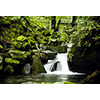
The Arboretums originated with the transfer of the Royal Superior Institute of Forestry to the Abbey of Vallombrosa, after the sale of the Paterno farm (the Institute’s original headquarters). At that time, some two hundred trees were also transferred and formed the first nucleus of today’s arboretums, planted following further acquisitions of land. In 1890, a small portion of the arboretum became a botanical garden, and in 1934, the Dendrological Museum was set up. Today, the Arboretums are managed by the Experimental Institute of Forestry of Arezzo.
The collection of medicinal plants, mainly consisting of Tuscan and Italian specimens, is utilised for educational purposes. The plants are in the former Botanical Garden of the Institute of Forestry; the original nucleus dates to 2000 when the Garden was rehabilitated after years of abandon, following the Institute’s transfer to its headquarters at the Cascine Park in 1914.
The arboretums are made up of trees and shrubs characteristic of the flora of the northern hemisphere (North America, Europe and Asia). The plants are divided into six arboretums which occupy a surface area of approximately 100,000 square metres inside the Vallombrosa Nature Reserve. Among these, the Masso del Diavolo Arboretum with plants from the Mediterranean region is of particular interest.
The Dendrological Museum exhibits wood types, seeds, portions of plants and a collection of specimens of the wood species present in the Arboretum. The exhibits are mainly preserved dry, at times in a liquid.
(Donato Monaco)
The visit is completed by a stop at the nearby visitors centre, a mandatory lap in order to comprehend this territory’s natural patrimony.
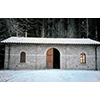
 Ufficio Amministrazione di Vallombrosa, Gestione ex Azienda di Stato Foreste Demaniale, Corpo Forestale dello Stato
Ufficio Amministrazione di Vallombrosa, Gestione ex Azienda di Stato Foreste Demaniale, Corpo Forestale dello Stato
The Superior Forest Institute, the first national school of forestry, was founded in 1869 and headquartered in the Abbey of Vallombrosa. Following the Institute’s transfer to Florence in 1913, the School for Non-Commissioned Foresters was instituted; its didactic outfitting is the source of the materials conserved in the office of the Administration of Vallombrosa.
The didactic collection mainly consists of two nuclei: the first made up of topographical instruments used to train students of the Forestry Service School for Officers from 1910 to 1950 circa; the second made up of forest equipment for working in the woods, formerly property of the Superior Forest Institute, and later transferred to the School for Officers. The exhibits are from the 19th and 20th centuries.
Born in 1999, the "San Giovanni Gualberto" Botanical Garden contains most of the specimens of herbaceous plants and several shrubs from the Biogenetic Nature Reserve of Vallombrosa. The various species are grouped by their environment of origin. The forest of Vallombrosa has an environmental learning-trail for schools.
(Donato Monaco)
After an excursion through the woods of Vallombrosa, a 7 kilometre detour towards the hamlet of Raggioli in the commune of Pelago will take you to the Museo della Civiltą Contadina e dell'Artigianato della Montagna, which exhibits tools tied to work in the fields and woods.
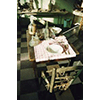
The Museum was instituted in 1978 at the initiative of the townspeople of Raggioli, for the purpose of conserving the memory of rural life and crafts in the past. The exhibition is set up in the Raggioli ARCI Centre, which manages it. In 2002, after having been closed for some time due to damage caused by a flood, the Museum was reopened.
The Museum's ethnographic collection displays a wealth of objects of everyday use, typically employed in the mountains, implements used by shoemakers, carpenters, and blacksmiths, tools for work in the fields and the forests. These objects (19th and 20th centuries) have been donated by the townspeople of Raggioli.
(Donato Monaco)
Finally, taking SS69 and continuing on towards Rufina via SS67, you can enjoy the valley’s other great resource: grape cultivation. The Villa di Poggio Reale is indeed the headquarters of the Museo della Vite e del Vino del Chianti Rufina, which exhibits documents, machinery and tools tied to the area’s winegrowing tradition. To conclude the itinerary, you can make a stop at the adjoining wine cellar to sample the local wines.
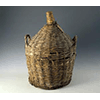
The Museum, which forms part of the Mugello – Upper Mugello - Val di Sieve Decentralised Museum, has occupied premises in the historic Villa of Poggio Reale since 1978, after having first been opened in the Villa of Pomino. Created through the grant of collections owned by the Chianti Rufina Consortium, it was rearranged in the summer of 2000, utilising the enormous underground wine-cellars built in the first half of the 19th century. The exhibition displays instruments and machinery for grape-growing and the production and preservation of wine in use from 1930 to 1960, as well as a fine collection of eighteenth-century blown glass. Completing the museum's facilities are a wine-shop and a notable historical library containing books, documents, photographs and films on various aspects of wine-growing and winemaking.
(Graziano Magrini)
****************************
Texts by Elena Fani
English translation by Victor Beard
Last update 15/feb/2008



 = libraries and archives
= libraries and archives  = scientific research centers
= scientific research centers  = memorial places of scientists
= memorial places of scientists = public health places
= public health places = places of science and worship
= places of science and worship = places of technology
= places of technology  = museums and collections
= museums and collections  = villas and gardens of science
= villas and gardens of science
